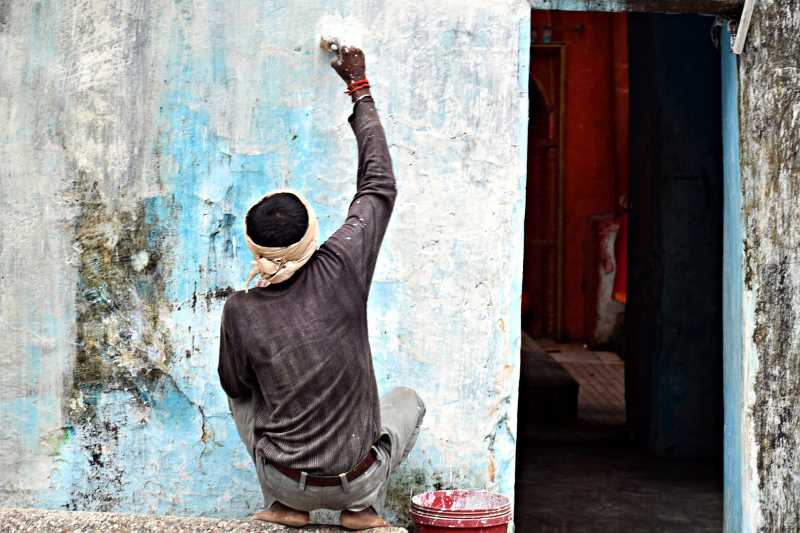10 Steps To Post-Purchase Home Improvement
Interior Design & Decor5 minutes read
2506 views
2506 views
(Guest Writer: Jennifer Holland)
Several reasons warrant a home remodel. Some people renovate a house before relocating to increase its monetary value in the market, while others renovate to increase comfort. Estimating costs for renovation are essential when planning to undertake a renovation, mostly for the new homeowners.
Post-purchase home improvement is an expensive project that requires adequate planning. What steps should you follow when improving your house?
Here is a step-by-step guide to help you renovate your home after you purchase it.
1. Have A Plan
Make a complete assessment of what you want to improve in your new house. The time to start and how you want it to look are the primary considerations when formulating a plan.
A good strategy is realistic and achievable on time. It should not put you or the contractor under any pressure. To ensure quality renovations, stick to your plan, and avoid any hurries or shortcuts. Taking a shortcut is never an option when renovating a house.
When the work is complete, it should give an ideal look and feel to you and the entire family, especially your kids who may love it when some new work is going on.
2. Craft A Budget
The final product of your renovations entirely depends on the budget. Contract a professional to help you determine what is possible with the budget at hand. Prioritize the basics when spreading your budget.
If you are not working on a tight budget, write down what you want to improve in your house before inviting a professional to approximate the renovation cost.
Leave 20% of your budget untouched to accommodate miscellaneous expenses that may come up.
3. Hire A Contractor
The contractor helps in determining the scope of work. Make sure you sign a legal contract to avoid any potential risks. At this point, involve your agent. Following the due legal process reduces the risk factor in your investments.
Before settling on any contractor, conduct profound research on the best contractors online or by asking friends. Check their rating and the previous projects the contractor has done.
4. Seek Permits From Authorities
It is essential to follow the legal procedure when doing any project. With the contractor you hired, check the regulations governing the building and law of houses in your municipality. The rules vary depending on your area of residence so if there any permits required, visit the authorities and get the license.
5. Order All The Required Materials
After acquiring all the necessary permits, start ordering the required building materials. It is vital to visit the building material supplier with the contractor because the materials have finer details like the required sizes, which can be missed if you buy it yourself.
Buying the materials in bulk from one trusted supplier makes the materials cheaper because of the discounts that come with bulk buying. Some bulk buyers may carry free transport services so take advantage of such offers to cut expenditure.

Image © Rajesh Balouria via Pixabay
6. Start The Renovation Process
Once all the necessary materials are delivered on-site, commence the renovations immediately. Clear the house to give the workers ample space. In case of any demolitions, prioritize it because constructing new walls takes more time. Newly built walls take months to dry, and when done first, they dry on time, therefore minimizing delays.
7. Work Behind The Walls
The construction work done behind the wall is enormous, and it is done before any other after-wall construction. The watering system, heating system, sound systems, and air conditioning systems are fixed at this point. It would be best if you chose what suits you best when purchasing the water systems.
The behind-the-walls work is a very delicate process that requires dedication from the construction teams. It is essential to conduct regular inspections to check the quality of work done.
If any leakages occur in the plumbing system, ripping off the water system for re-do is costly. A faulty electrical system is also life-threatening. Perfection should play out during this phase.
8. Painting And Flooring
Finish painting the walls and ceiling before completing the floor. For a neat finish, apply the undercoat before finishing with oil paint with the colour of choice.
If you finish the floor before painting the rooms, the paint splashes can cause stains that make the floor appear less neat.
The floor should be done to a subtle finish. It determines the final appearance of the house. To achieve this, the contractor should ensure that the tiles are correctly installed. Any mismatches can make the tiles break easily and have a bad look. It is said that renovations should be done to a subtle finish; therefore, the upgrades must live to that.
9. Install The Cabinets
When the walls and floors are done, the beauty of the finished product is evident. To complement the beautiful walls, install cabinets of your choice. Choose a colour that matches well with the colour of the walls. A good room has a theme colour. The theme colour should inspire the colour of cabinets.
The size of the cabinets installed depends on you. The size of your family mostly determines it. Small cabinets encourage untidiness. You must, therefore, ensure that the cabinets installed are adequate.
10. Installing The Finishing Touches
Adding the house décor is the last step when improving your house. Contract an interior designer to help in installing the interior decorations. Some decorations like splashes can go south if you do them on your own. The amount of decorations installed depends entirely on you.
Chandeliers and paintings can make a house beautiful, and you can add them if you like once your renovation is completed. Add the seats and tables at this stage. They are vital in the final appearance of your living room. For families with kids, you must equip the kids playing area.
We often forget that renovations call for the uplifting of the kitchen and dining rooms. Invest in all places to realize the comfort of your new home.
Conclusion
When purchasing a new home, comfort is a significant consideration. Renovating the new home to suit your need is the only way to achieve comfort. It would be best if you plan before committing to remodelling your new home.
If possible, you should stay outside your new residence to give the workers ample space to renovate the house. Moreover, a place under construction is not safe to live in it. Congratulations on buying a house!
~

Author Bio: Jennifer Holland works for a custom essay service as the senior writer and editor. When she’s not writing for work, Jennifer loves to blog and write ebooks on lifestyle, interior design, and DIYs. During the weekend, she loves watching new movies and visiting art galleries with her friends.
Request for quotes and we'll match you with a selection of Interior Designers!
Previous
5 Benefits Of Renovating Before You Move In


 Sign Up with Google
Sign Up with Google

.jpg)

